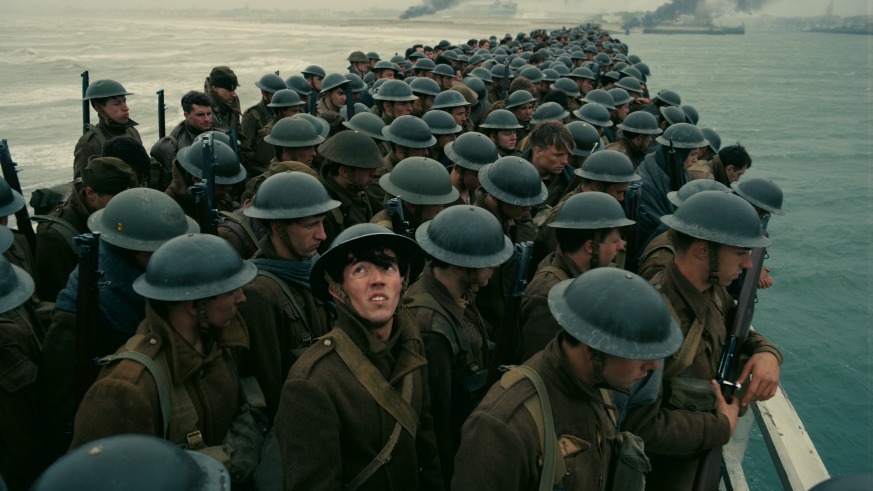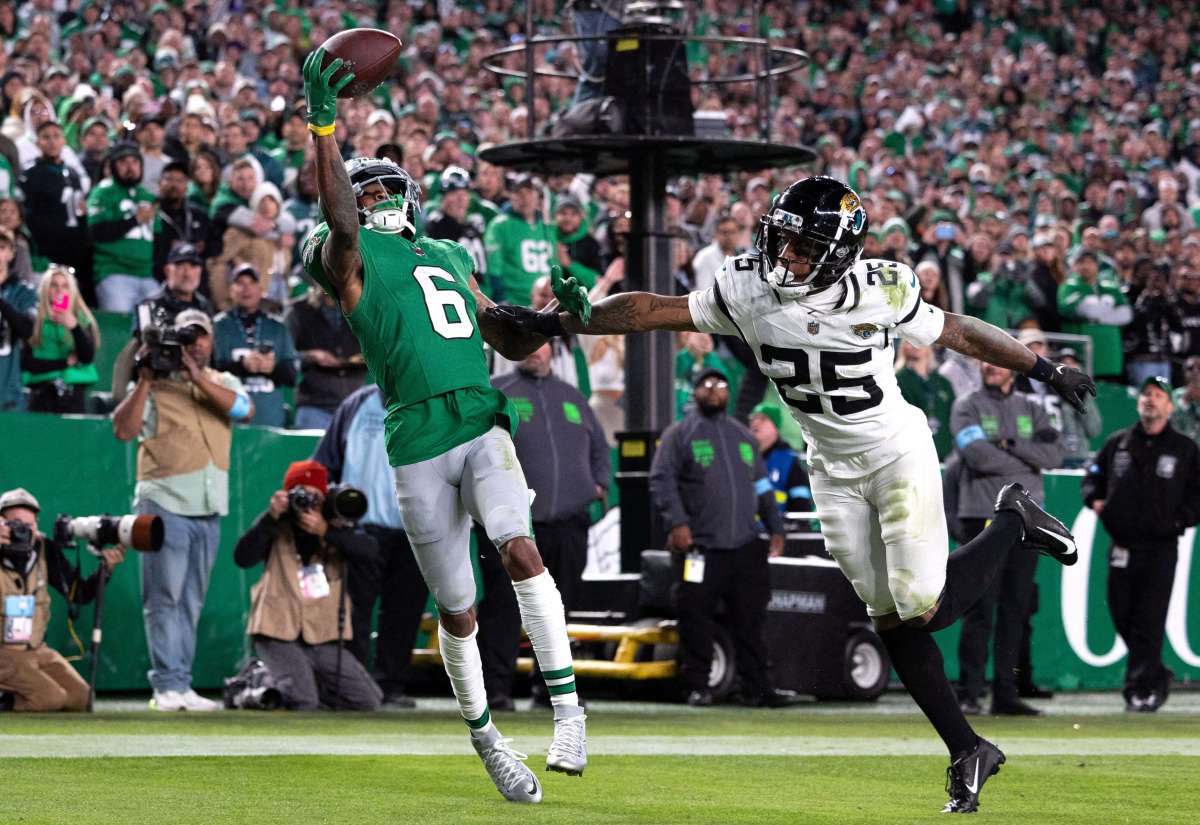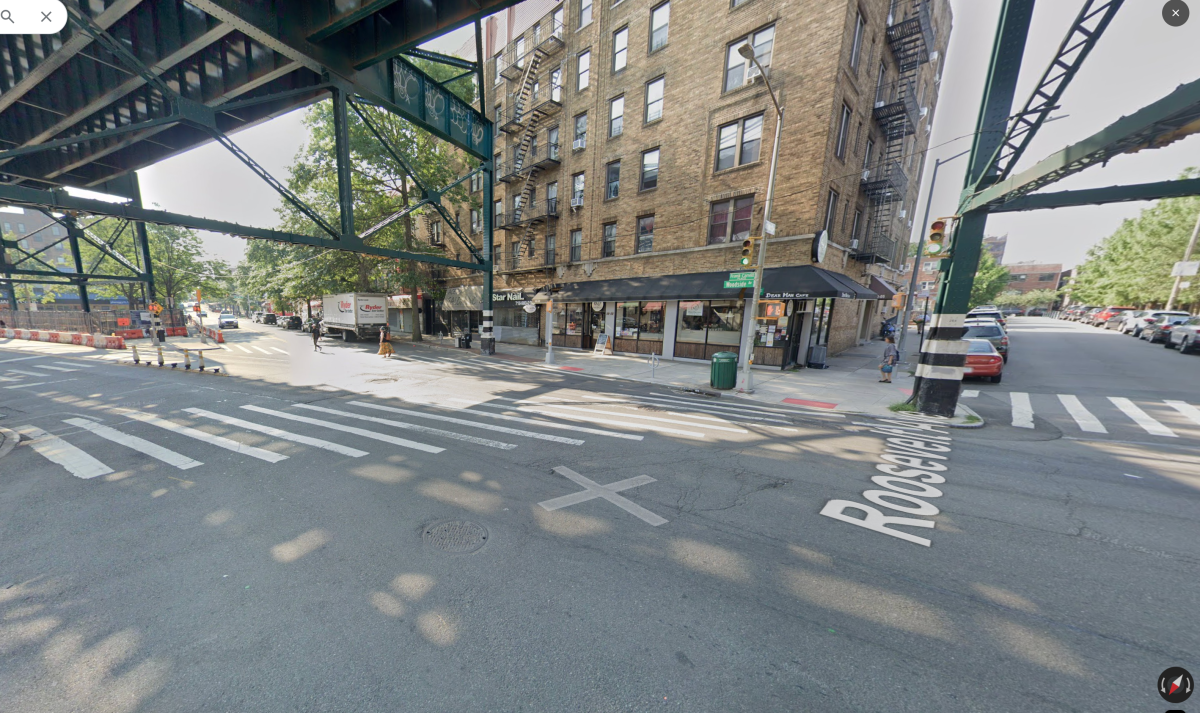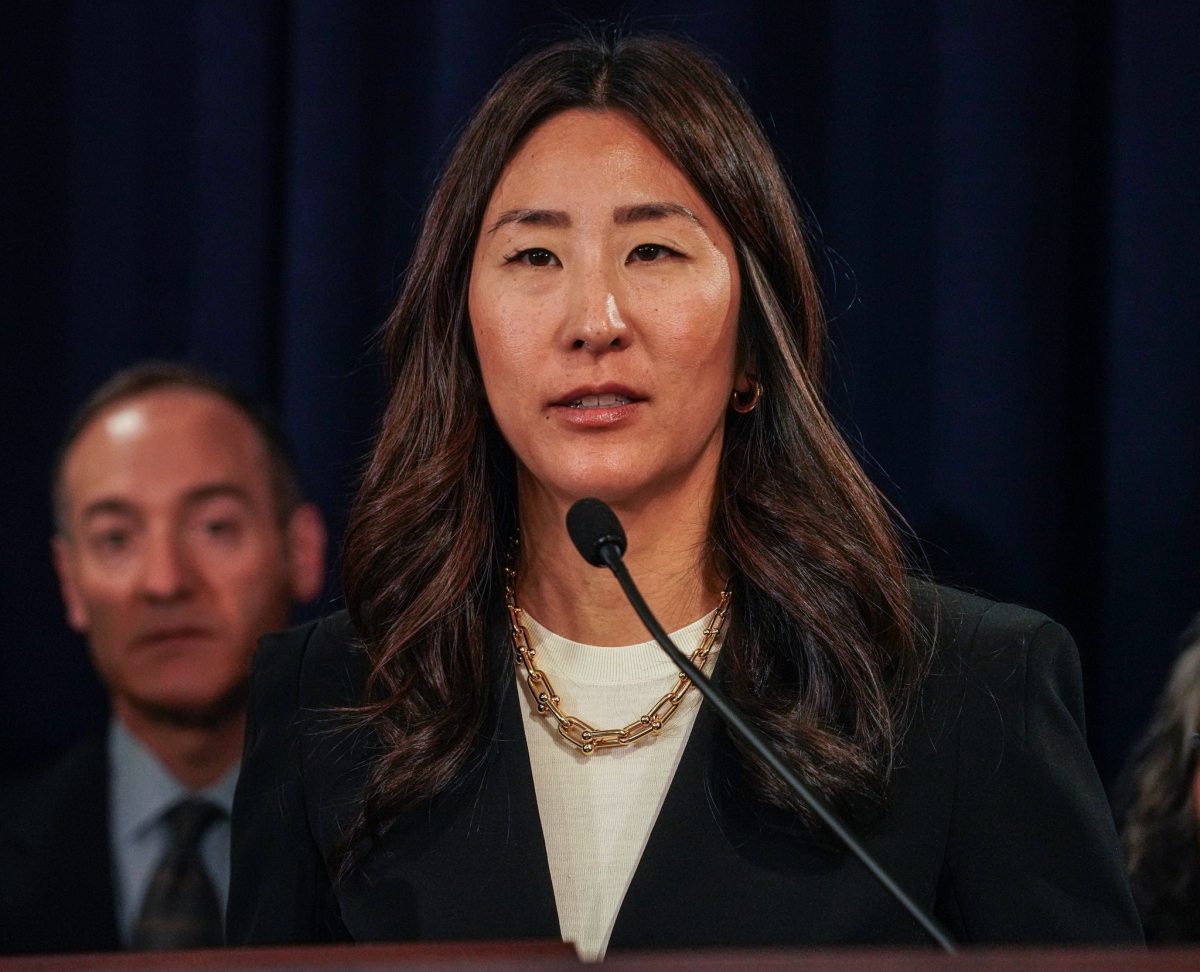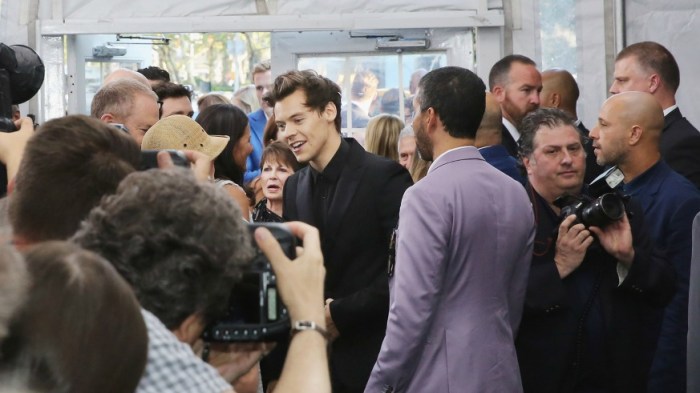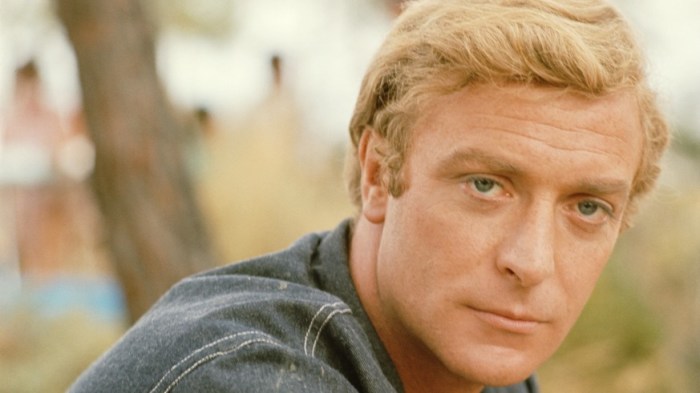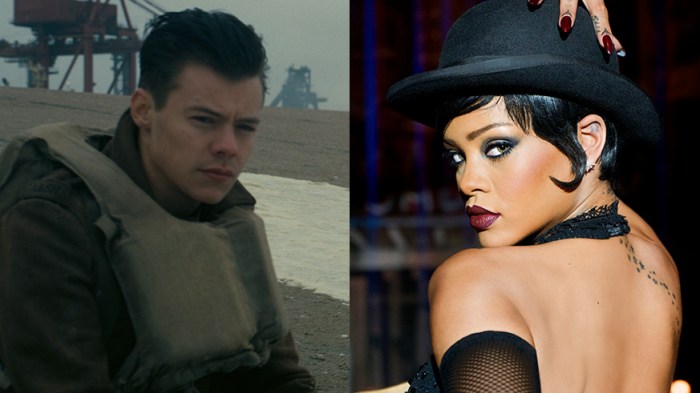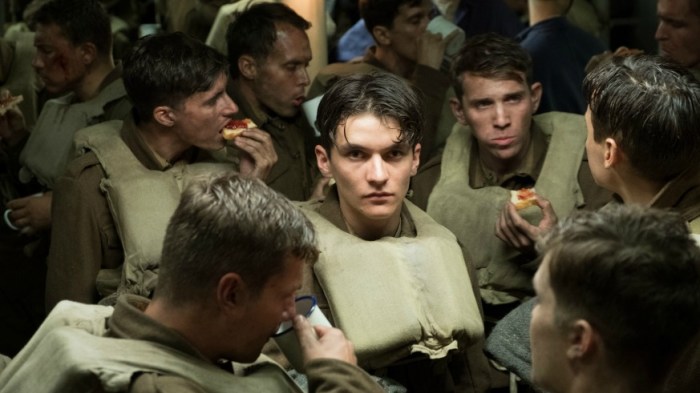If you’ve seen the ads for “Dunkirk,” you’ve probably noticed a term that scores as much real estate as the name Christopher Nolan: “70mm.” Maybe you even saw some articles about how when the director’s World War II epic — about the evacuation of some 40,000 English soldiers after a battle in the north of France — is released on July 21, it will be the widest 70mm release in a quarter of a century. You’ve been told you should see “Dunkirk” this way, but why? Here’s a guide to 70mm and how if you can see “Dunkirk” that way, you definitely should:
For starters, what is 70mm film?
It’s a high-resolution format of celluloid film. It is, of course, twice the size of 35mm, which for decades was how most films were projected in theaters. What that means is higher quality: a clearer picture, even stronger colors and blacks and whites. In its heyday, spanning from the 1950s through the early ’70s, it wasn’t used all the time. Usually it was reserved for big epics: “Lawrence of Arabia,” “Cleopatra,” “2001: A Space Odyssey.” Its high costs led to it falling from favor, combined with the way Hollywood in the ’70s took a brief turn away from flashy spectacles towards the realistic and gritty likes of “The French Connection,” “The Godfather,” etc., etc., etc.
Since then it’s occasionally been revived, in films like Ron Howard’s “Far and Away,” from 1992, and Kenneth Branagh’s 1996 version of “Hamlet.” Over the last handful of years, though, certain filmmakers have brought it back a little more frequently, including Paul Thomas Anderson (“The Master”), Quentin Tarantino (“The Hateful Eight”) and Christopher Nolan (first with “Interstellar,” now with “Dunkirk”). Still, it remains rare.
Can I only see “Dunkirk” in 70mm?
No. There are six ways you can see it. It will be showing in plain old digital, as is the current industry-wide standard. It will also be shown digitally in IMAX Laser and IMAX Xenon; the former is the exact same shape as IMAX film (i.e., like a square), while the latter is not as tall as the former. Additionally, you can see it in 35mm film. The ideal way to see it, which is to say Nolan’s preferred format, is 70mm IMAX. But if there isn’t an IMAX theater near you, you can see it in 70mm in traditional multiplex theaters that are showing it. A full list of all 70mm theaters, IMAX and non-, can be found here. Oh, and avoid “LieMAX.”
Frankly, why should I care?
Well, Christopher Nolan did shoot “Dunkirk” in both 70mm and 35mm. But we get it: Unless you’re seeing it in giant, retina-filling IMAX 70mm, the average moviegoer may not notice the difference between film and digital, which is how almost all theaters project new films these days. We admit we have trouble making the case to plebeians for film over digital, sounding a bit like those audiophiles who insist you should listen to music on vinyl.
So we turned to an expert: John Sittig, a longtime projectionist who runs the projection unit at Reading Cinemas, which owns theaters in America, Australia and New Zealand. (Three of the eight theaters in New York are owned by Reading Cinemas: the Village East, City Cinemas East 86th St. and Cinema 1,2,3.)
“It’s just a different experience,” Sittig says about 70mm versus digital. “I use the words warmer or softer. Digital is strikingly sharp — almost unrealistically sharp to me, in some cases. Film has a warmth or some kind of texture that is more realistic.”
Right now the highest grade of digital projection is 4K. Sittig says that still can’t come close to 70mm. “Because of the size of the film frame, 70mm is equivalent to an 8K in digital,” he explains. In other words, it simply looks better — especially if you’re old enough to remember when all films were projected on film.
This all sounds like a technical headache
And it is. To roll “The Hateful Eight” into roughly 100 theaters for 70mm — “Dunkirk” will one-up it with 125 theaters, the widest 70mm release since “Far and Away” 25 years ago — the Weinstein Company forked over between $8 and $10 million to install 70mm projectors in theaters that did not have them. (Warner Bros., who will distribute “Dunkirk,” has since bought those projectors.)
Not only that, but few of today’s projectionists know how to project film. Digital simply doesn’t require much caretaking. “Ninety-nine percent of the time, it doesn’t matter if someone’s in the booth. 99 percent of the time it’s going to run flawlessly,” Sittig says. Of course, computers aren’t reliable. “Every once in a while we’ll lose a show for one reason or another, because something didn’t work that way it was supposed to. But that seldom happens.”
The downside to near-perfection is that when a title like “Dunkirk” comes around, demanding some theaters project it on film, not every staff knows how to handle it. Sittig says with “The Hateful Eight” and again with “Dunkirk,” he’s spent several months training his projectionists, some around the ages of 18 and 19, how to project film.
“You need to have a dedicated projectionist, someone in the booth who’s physically handling the film for every showing, and hopefully looking out the porthole and making any adjustments they might have to make during the presentation,” Sittig explains.
There’s also a chance you could damage the film print. Film is notoriously fragile. Film reels break. They gain dust and dirt. Every time you project a reel through a projector, it kills the film a little. That’s why old film prints shown at repertory theaters sometimes look beat-up; they’ve lived a long life. Sittig says a number of theaters showing “The Hateful Eight” returned damaged or broken prints. For the record, of the five Reading Cinemas oversaw, only one print was harmed.
Why aren’t there more 70mm films now?
For the same reason it fell out of fashion in the ’70s: It’s expensive. Sittig says a 70mm print tends to cost between $20,000 and $25,000 to strike, as opposed to a digital copy, which runs a couple bucks to download onto an existing hard drive. Multiply by that by the hundreds or even thousands for a film released nationally. In the old days, Sittig tells us, they were even pricier: Old prints used to have magnetic sound, which means the sound was attached to the film prints. That adds another $20,000, meaning a single copy of “Lawrence of Arabia” probably ran $40,000 to strike. Today, the sound for a film like “Dunkirk” is on a CD that is automatically timed to the film reels.
But like you said, isn’t digital projection near-perfect?
Eh, kind of? It’s a matter of taste, of course. Do you care how your image looks? To some of us, digital copies can look, well, overly digital, fake. On top of that, multiplexes are notorious for cutting corners or not caring about certain technical foul-ups, partly because few care to notice or complain — much the way so many Average Joes don’t notice they have “motion smoothing” running on their fancy HD TVs, making the movement look fake.
There are untold horror stories about random multiplex theaters not changing their projector bulbs, resulting in dim-looking movies. Some even leave on the special lens they use to project 3-D, meaning 2-D movies are almost unwatchably dark.
If you’re going to see “Dunkirk” in 70mm, it’s a safe bet the theater cares about how you see it, ensuring the highest quality. It’s not just about being a snob; it’s about getting the most bang for your buck.
Do regular moviegoers enjoy 70mm, too?
Tough to say for sure, but Sittig says 70mm presentations of “The Hateful Eight” and “Dunkirk” were very popular. “The Hateful Eight” had its strongest 70mm showings at Reading Cinema’s Village East theaters in New York, where it played for months.
Part of this has to do with it feeling more like an event. With a normal digital screening, you go into the theater, sit down and wait for a programmed computer to beam the film onto a screen. It’s automatic. Film has a handmade feel. It requires a projectionist to oversee it — at all times, if it’s in delicate, easy-to-break 70mm. You can sense a person putting it on for you, and you start to feel like a person, too, not just a statistic buying a ticket.
Sittig recalls projecting “The Hateful Eight” in 2015. “People would actually turn around in the back couple rows, look into the booth and give me a thumbs up, because they knew there was somebody running the film and it was actually on film,” Sittig says. “People will drive past two or three or four multiplexes that are playing the same film, in order to see it in 70mm.”
OK, which format should I see if I can choose from any option?
We say IMAX 70mm. Nolan has been making films with partial IMAX footage since “The Dark Knight” in 2008, and usually the film toggles, jarringly, between a tall, square-shaped, screen-filling image and “widescreen,” which involves black bars at the top and bottom. But we’d guesstimate about 70 to 75 percent of “Dunkirk” is in 70mm IMAX, meaning fewer interuptions from getting lost in stunning, transporting images of war. It really is something else.
But if you don’t live near an IMAX theater showing it on 70mm, regular 70mm is better than any kind of digital. Remember: Like Sittig said, it’s twice as crisp as any digital copy right now.
Follow Matt Prigge on Twitter @mattprigge

